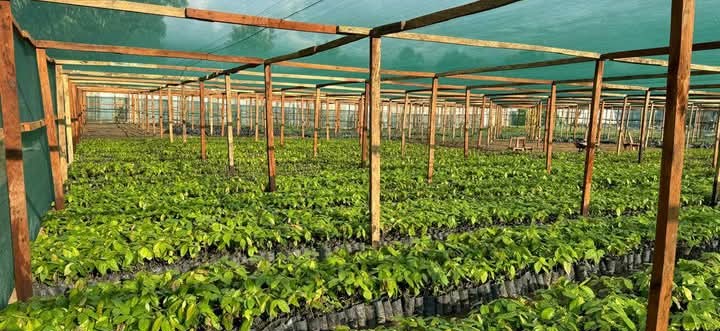Nur Microfinance, based in Yei River County in Central Equatoria State, will support farmers in South Sudan’s greenbelt region to produce cocoa, an official said.
Johnson Hillary Poru, team leader of Nur Microfinance, told Radio Tamazuj on Wednesday that the cocoa project, which began last year, has so far raised more than 800,000 seedlings toward a target of 10 million to be distributed to outgrowers in the greenbelt region.
“We raised more than 800,000 seedlings in the cocoa project that we started last year. Our target is 10 million seedlings to be distributed to the outgrowers in the greenbelt region, where the soil is suitable and responds well to climate conditions,” Poru said.
He said the main purpose of cocoa production is to combat climate change and boost local farmers’ incomes, as cocoa is considered one of the world’s most valuable cash crops.
“We started this project to combat climate change. We thought it wise that addressing climate change could also be achieved in multiple ways, including tree planting,” Poru said.
“Cocoa is one of the most lucrative cash crops in the world market today, and our goal is to be part of the global movement responding to climate change. Secondly, we aim to create more jobs in South Sudan, given the limited employment opportunities across the region. Our objective is to employ many people in the production cycle,” he explained.
Poru urged the Ministry of Agriculture to support the project and called on the government to provide a secure environment for farmers.
Julius Lomude, a project beneficiary who has planted 2 acres of cocoa, encouraged farmers, particularly in the Equatoria region, to engage in cocoa production to fight poverty and secure their children’s future.
“Cocoa planting is a good initiative, and I encourage everyone in the country, especially in Central Equatoria, to focus on production because our country faces poverty. Children want to go to school, but there is no money for their education. With cocoa production, you can earn enough to pay school fees,” he said.
Farmers from Kajo-Keji, Morobo, Lainya, Yei and parts of Western Equatoria have also requested cocoa seedlings, according to officials.
West Africa accounts for about two-thirds of the world’s cocoa production. The International Cocoa Organization estimates the region produced 75% of the global total in the 2020-2021 season. Ivory Coast and Ghana are the world’s top producers.




